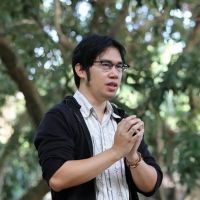The Effects of Planted Trees and Bird Community on Natural-Seedling Recruitment in Forest Restoration Area Using Framework Tree Species Method

FORRU Contributors
ABSTRACT: This study examined the effects of planted framework trees and bird communities on natural tree seedling recruitment in forest restoration trials (using the framework species method), established by Forest Restoration Research Unit (FORRU), Biology Department, Faculty of Science, Chiang Mai University, in the upper Mae Sa Valley, Mae Rim District, Chiang Mai, in Doi Suthep-Pui National Park. Natural tree seedlings were surveyed beneath 5 species of framework trees: Erythrina subumbrans, Hovenia dulcis, Melia toosendan, Prunus cerasoides and Spondias axillaris. Five individual trees of each species were selected (25 trees) in 3 replicated plots of the same age (9-years since planting). Bird observations, using binoculars were carried out on each framework tree ,to determine species richness, diversity and numbers of visiting birds, which were assumed to affect natural-seedling recruitment. A total of 36 tree seedling species were found beneath the selected trees, of which 11 were wind-dispersed and 25 animal-dispersed. The population density of animal-dispersed tree seedlings was higher than the that of wind-dispersed seedlings beneath all selected framework trees. Sample plots beneath Prunus cerasoides supported the highest population density of tree seedlings. Mean survival rate of the seedlings was 96.1%, indicating that the selected framework trees supported the recruitment of seedlings very well during one year of seedling monitoring. A total of 48 bird species was recorded between July 2006 and June 2007. Two hundred and twenty-eight individual birds were recorded using the selected framework tree species. Non-frugivorous birds outnumbered frugivorous birds. Frugivorous birds were more frequent than non-frugivorous birds only in the crowns of Erythrina subumbrans. The effects of bird communities on seedling recruitment differed among tree species. Bigger trees, which attract high numbers of birds by providing food resources, roosting and nesting sites, may increase seed deposition in the sampling plots more than smaller trees with less attractiveness. Erythrina subumbrans produced bright red flowers while leafless, which provided high quantities of nectar consumed by many bird species. Melia toosendan produced numerous, white flowers that attracted many insects, and insectivorous birds to the trees. Prunus cerasoides attracted the high abundance of birds. High amounts of branchlets, flowers and fruits of this species provided lots of perching sites and food resources for birds. The highest species richness of birds was observed in Spondias axillaris, which had multiple crowns as nesting sites. Lowest species richness, diversity and abundance of the birds were observed in Hovenia dulcis. Crowns of these trees were not large enough to attract high numbers of birds. Moreover, the trees had not flowered since planting. Some possible physical and biotic factors in the sampling tree plots, which seemed to affect natural-seedling recruitment, were light intensity, litter accumulation and physical damage of seedlings due to tree falls. These factors were dependent upon the characteristics of each of the selected framework tree species.

